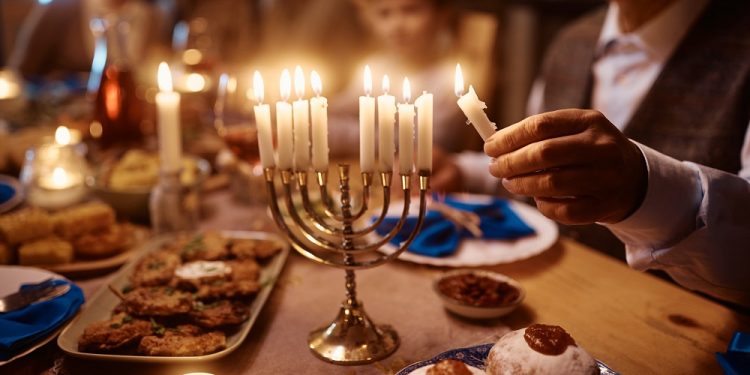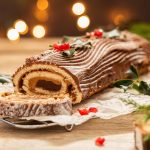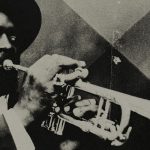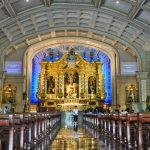
Hanukkah
Hanukkah is a Jewish festival that commemorates the recovery of Jerusalem and the re-dedication of the Second Temple at the start of the Maccabean Revolt of the 2nd century BCE. This holiday is also known as Chanukah and is often referred to as the Festival of Lights.
The holiday festival begins on the 25th day of Kislev and ends on the second day of Tevet. Candles are lit during each day of this religious festival to commemorate the Hanukkah Miracle — an event where the olive oil in the Second Temple’s menorah burned for eight days, although there was only enough oil for the candles to burn for one day.
The History of Hanukkah
In the books of the First and Second Maccabees, the story of Hanukkah is told. These accounts detail the re-dedication of the Temple in Jerusalem and the lighting of the menorah. But the telling of the story of Hanukkah predates these accounts and goes back even further to early rabbinic sources.
In 323 BCE, Alexander the Great died, and Judea became a part of the Ptolemaic Kingdom of Egypt until 200 BCE. Ownership of the region then transferred over to the Seleucid Empire of Syria. King Antiochus III wanted to conciliate his new Jewish subjects, so he guaranteed their rights to live according to their ancestral customs and to continue to practice their religion.
This would change in 175 BCE when Antiochus IV Epiphanes invaded Judea at the behest of the sons of Tobias. The Hellenizing Jewish faction in Jerusalem, the Tobiads, were expelled five years prior to Syria when the high priest Onias and the pro-Egyptian faction took control from them.
The Tobiads then lobbied Antiochus IV Epiphanes to recapture the city of Jerusalem. King Antiochus owned a vast empire that included parts of Judea with millions of people under his rule. In 175 BCE, he created a law that made it illegal for people to practice Judaism. He did this because he wanted the people to worship his Greek gods.
When the people stood up against his law, he ordered his troops to lay waste to the Temple of Jerusalem — which was important to everyone of the Jewish faith. He replaced the Jewish symbols with an altar that was dedicated to the Greek god Zeus.
As a result, Judah the Maccabee led the Jews in a revolt against King Antiochus. According to current historical documents, the two parties battled for three years. In 164 BCE, the Maccabees prevailed and defeated the king and his army.
When the Maccabees returned to the temple, it was nearly in ruins and there was only one jar of untainted olive oil available. Just enough oil to light one of the temple’s candles for a 24-hour period.
However, when they lit the candle, it burned for not just one day, but for eight days. It was just enough time for them to find more oil for their sacred temple candles. This is the miracle that can be found in the Talmud. Unfortunately, the defeat of King Antiochus and the restoration of the temple didn’t end the conflict.
The king’s men continued to wage war against the Jews for over two decades. It wouldn’t be until 142 BCE that a peace treaty was signed and the Jews were able to form their own independent region.
Facts About Hanukkah
Below are some facts about Hanukkah that we feel everyone reading today will appreciate. So without further ado, allow us to present these facts to everyone reading in no particular order.
- Menorahs come in all shapes and sizes.
- The only requirement for a menorah is for it to have nine candle holders. One for each of the eight days and one candle to light the rest.
- The menorah is lit every day after sundown.
- Traditionally, small amounts of money were given for Hanukkah; that changed over the years.
- Gift-giving became traditional among many American Jews because of the influence of the Christmas gift-giving season.
- Hanukkah is considered to be a minor festival compared to other Jewish holidays such as Yom Kippur, Passover, and Rosh Hashanah.
- The first U.S. president to celebrate Hanukkah at the White House was Harry S. Truman.
- Dreidels were first used by Jews in Judea to pretend they were playing games instead of learning scripture.
- In Israel, millions of sufganiyot are consumed for Hanukkah.
Observing Hanukkah
Jews celebrate Hanukkah by lighting a candle holder known as a menorah. One candle each night is lit for the eight days of the celebration. During the first night, one candle is added to the menorah and lit. On the second day, another candle is lit, and it goes on like this for each day of the celebration.
This holiday is also observed with special prayers and blessings, by the singing of songs, and the exchange of gifts. Food is also an important part of the celebration. Traditional foods for this holiday include sufganiyot — a type of deep-fried jelly donut. Potato pancakes, known as latkes, are also commonly enjoyed on this day.
Both of these are fried dishes because they are symbolic of the long-lasting temple lamp oil. After the Hanukkah feast, families will get together to take turns spinning a special top known as a dreidel. If this dreidel lands the right way, then players can win chocolate gelt (coins).
This is a holiday for family and for reaffirming one’s faith. Families spend a lot of time together during this festival, and it’s a time of great joy and hope. On social media, the hashtag #Hanukkah is often used to spread good wishes across social media.








